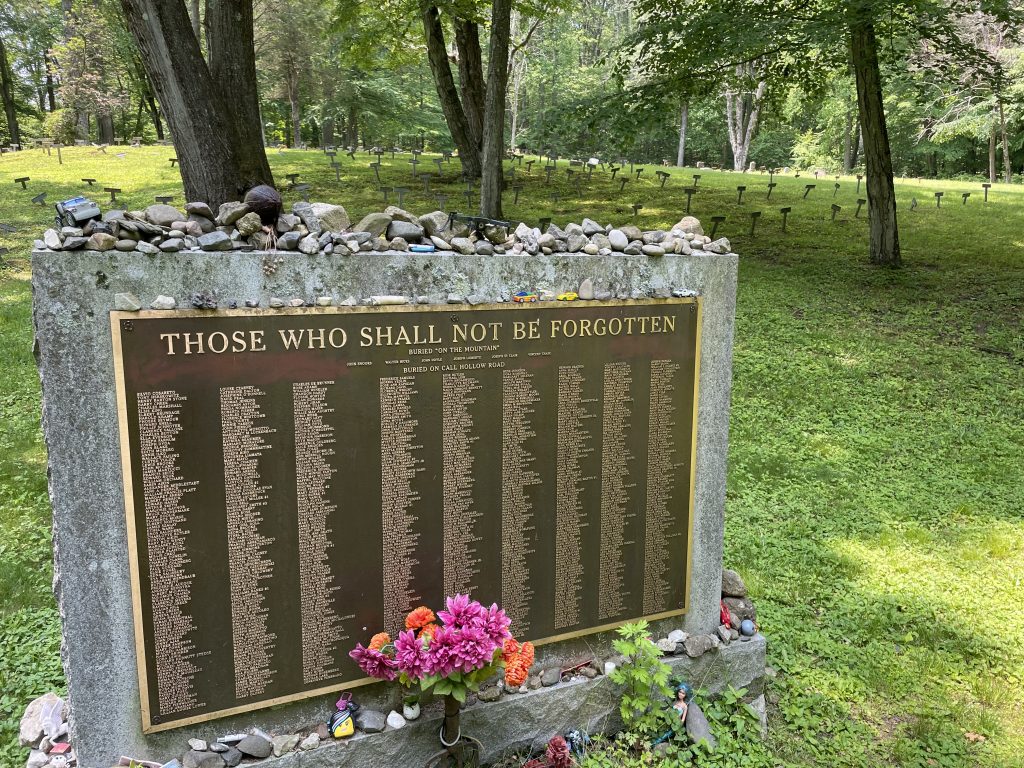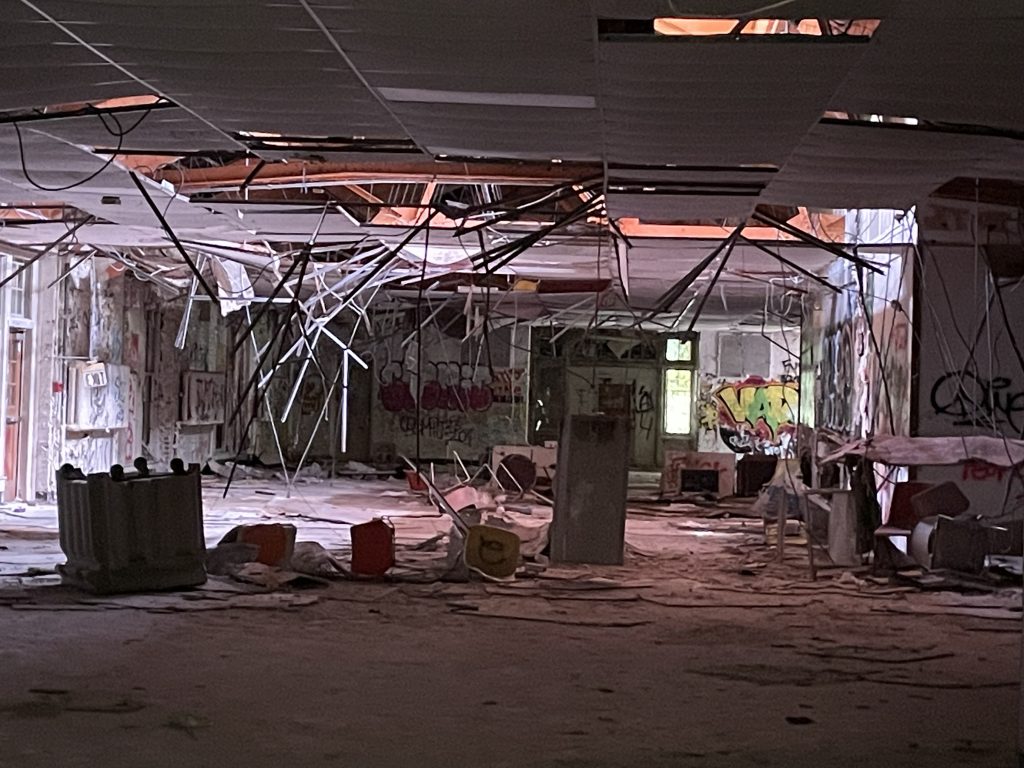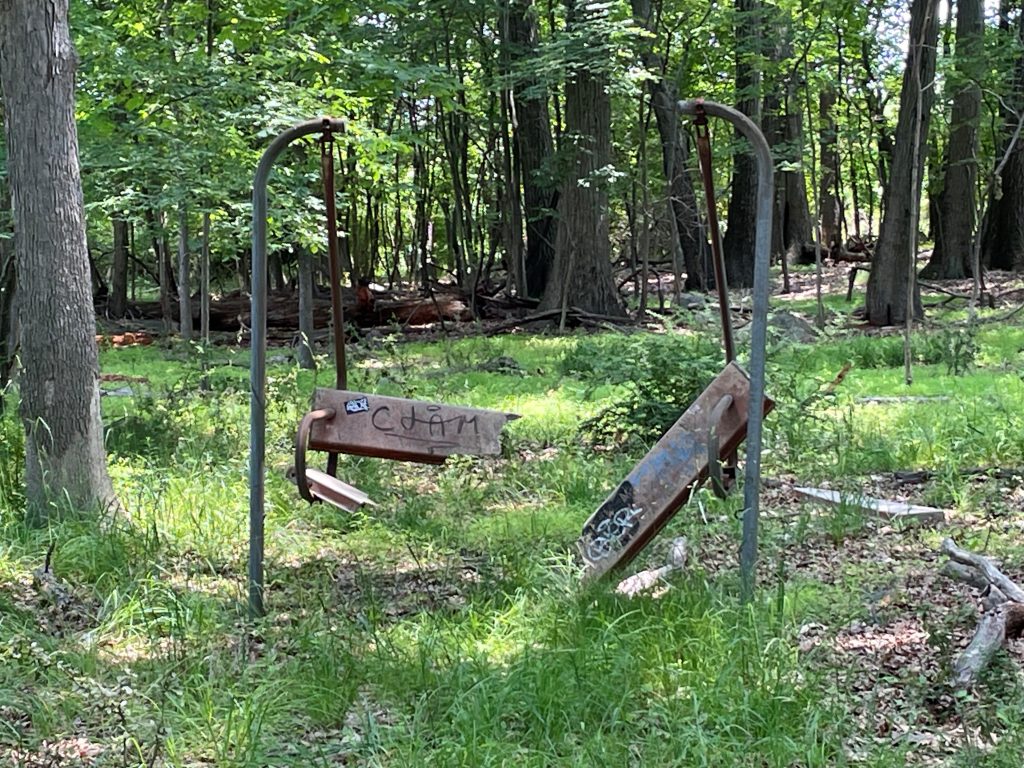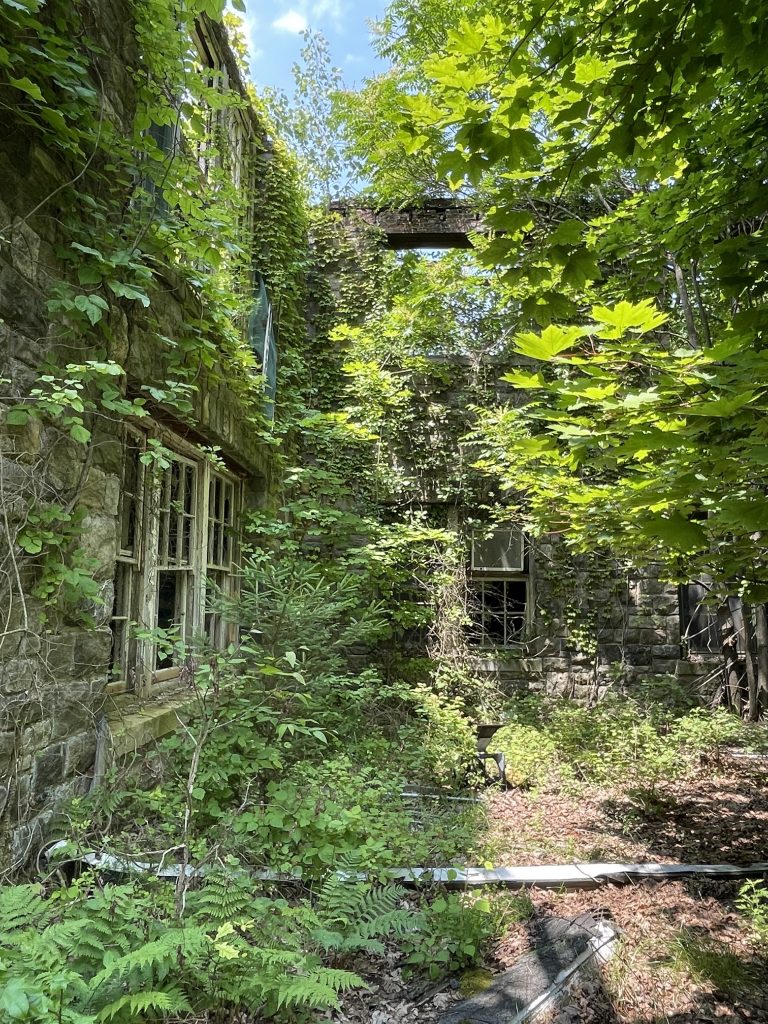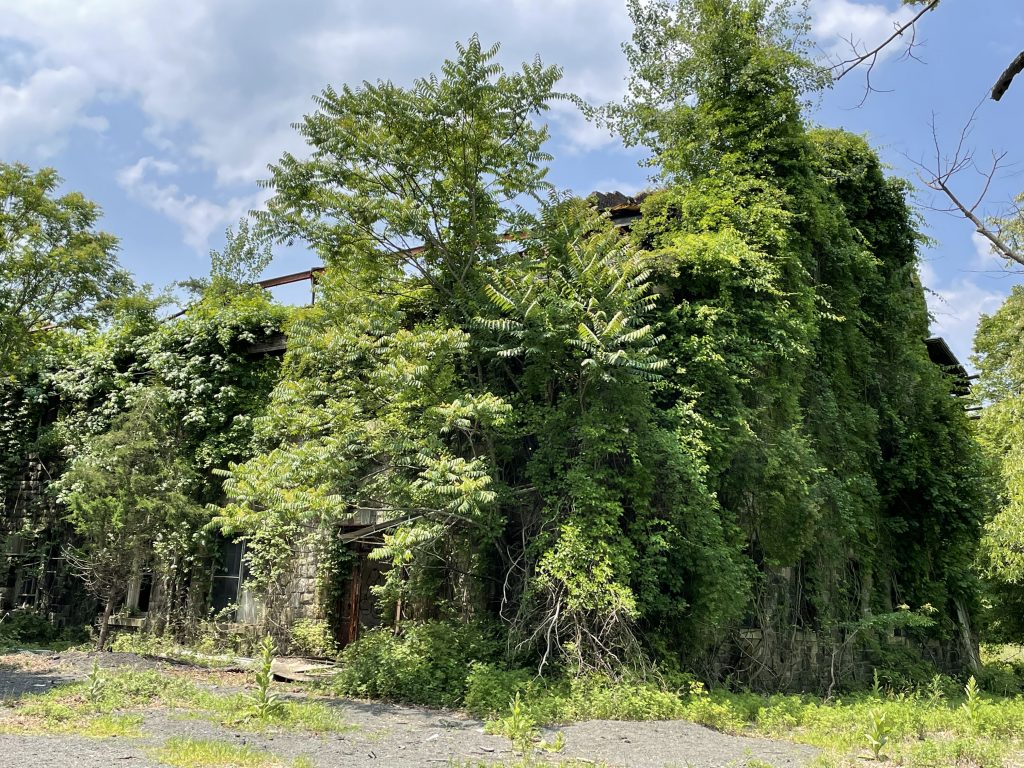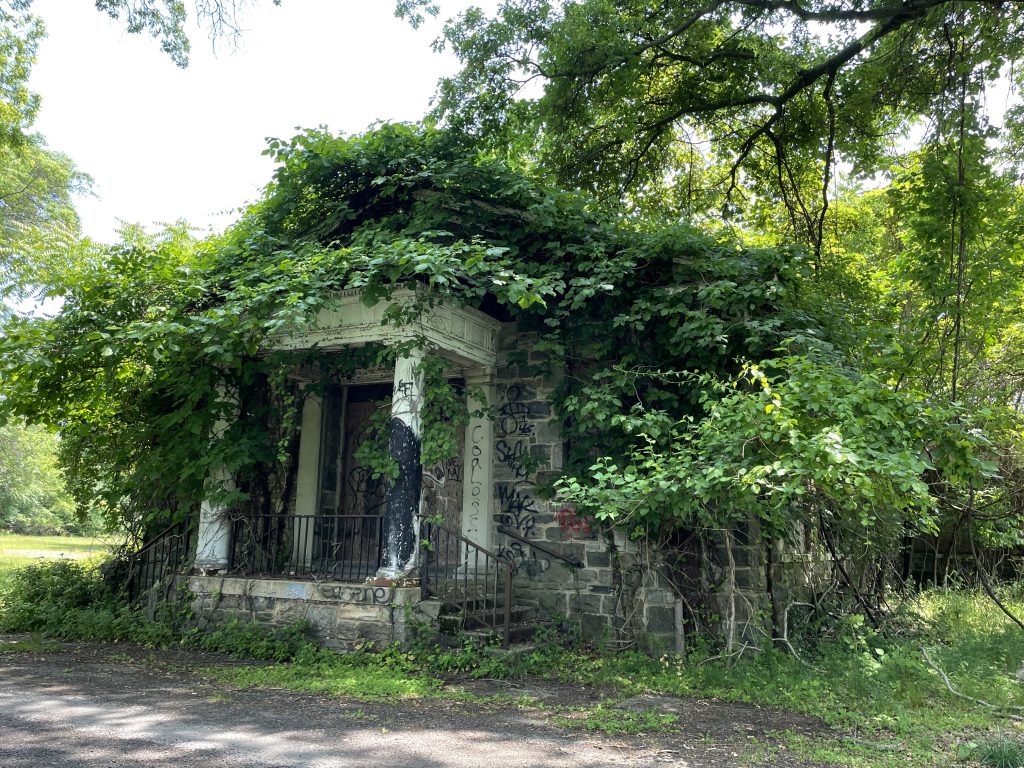Letchworth Village was not actually a village per se, but a (now-closed) residential institution for the physically and mentally disabled.
Located in Thiells, N.Y., the facility opened in 1911 and served all ages, from newborn to the elderly. At its peak, it contained over 130 buildings on 2,362 acres. It was named for William Pryor Letchworth, who advocated reform in the treatment of the insane, epileptics, and poor children.
The architecture of the buildings were modeled after Thomas Jefferson’s Monticello, making it very picturesque. It was lauded as a premier progressive alternative to asylums, and the lush grounds offered leisure space, as well as farmland for growing food. By 1921, there were 1,200 residents, mostly children.

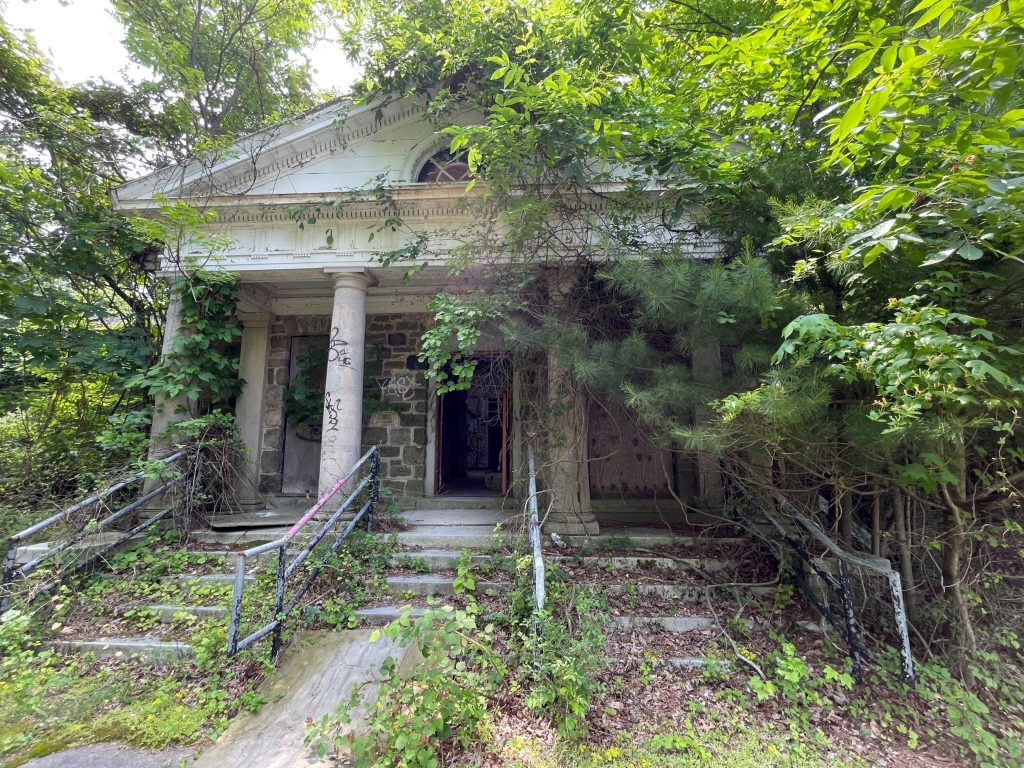
Within two decades, however, there were reports of inadequate funding, overcrowding, and resident and worker mistreatment.
In the 1950s, the residents (now numbering an astounding 4,000, double the capacity it was built to serve) were used without consent for testing the live-virus polio vaccine. To be fair, while this practice is considered unethical now, it was considered reasonable back then.
The facility continued in operation for years.
In 1972, Geraldo Rivera did an exposé on how intellectually disabled people were being treated (or more accurately, mistreated) in New York state, and Letchworth was included in this program.
Later, Bronx congressman Mario Biaggi arrived at the facility with Rivera in tow, and afterwards described the children as being subject to the “worst possible conditions I’ve ever seen in my life.”
The documentary showed the residents dirty and unclothed, and receiving no schooling, training, or activities of any kind.

And still, it took more than two additional decades for the institution to be permanently closed, which didn’t happen until 1996. In the intervening years, additional funding was thrown its way, but Letchworth Village’s days were numbered.
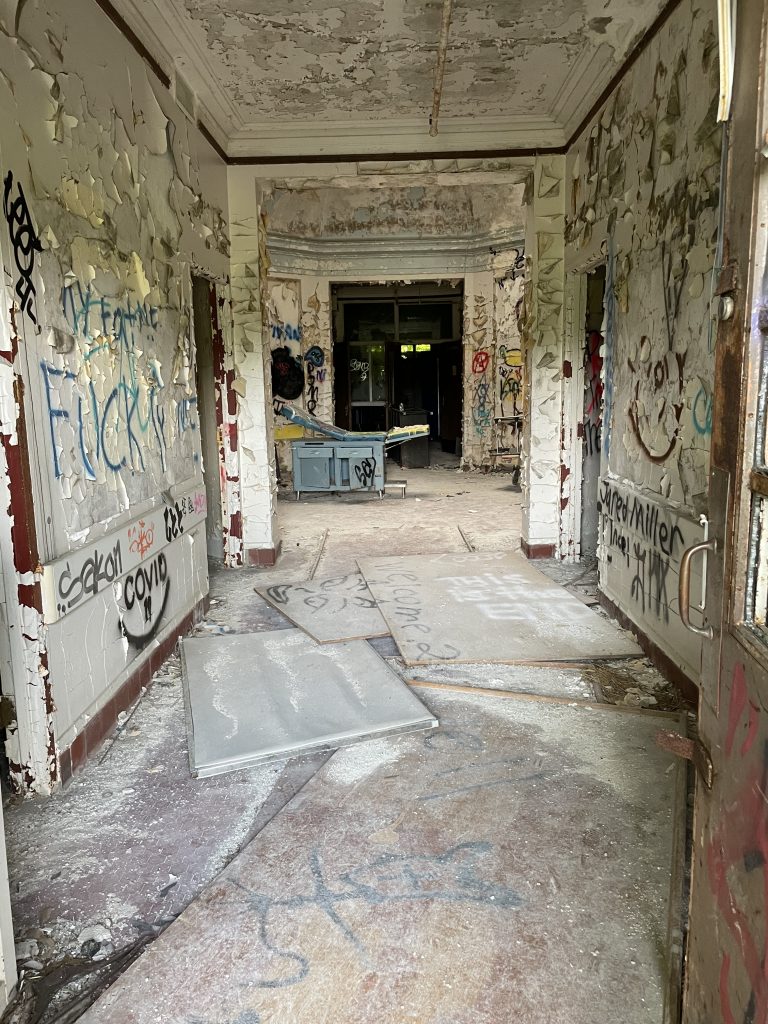
All of the abandoned structures have been left to the ravages of nature and graffiti artists, falling into disrepair and ruin, and of course are now believed by many to be haunted.
The site is now a state park (with, oddly, no website), and you can walk on the paths around the ruins, but you are not allowed to go into the structures. We found many open doors, which we peered into, but of course did not venture inside.
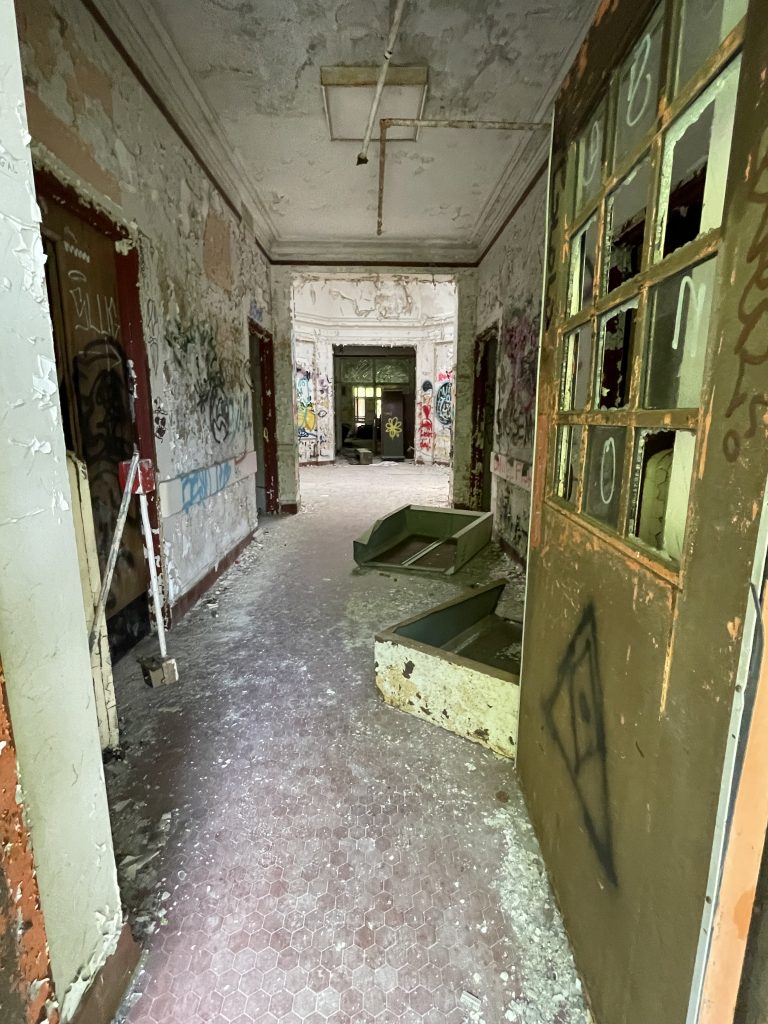
In one building I could hear faint haunting voices; I hurriedly turned around and said to Doug “I’m not sure if I’m hoping there’s people in there, or if it’s haunted, but we’re not sticking around to find out!”
I’m not saying one way or the other, but I am saying the picture at right is the very next picture I took – what is that running across it?!
At another building, just as we approached the door an enormous turkey vulture came swooping down at us from the portico roof just a few feet above us, dropping within a few feet of our heads before gaining enough wing speed to achieve full liftoff! That got our hearts pumping!
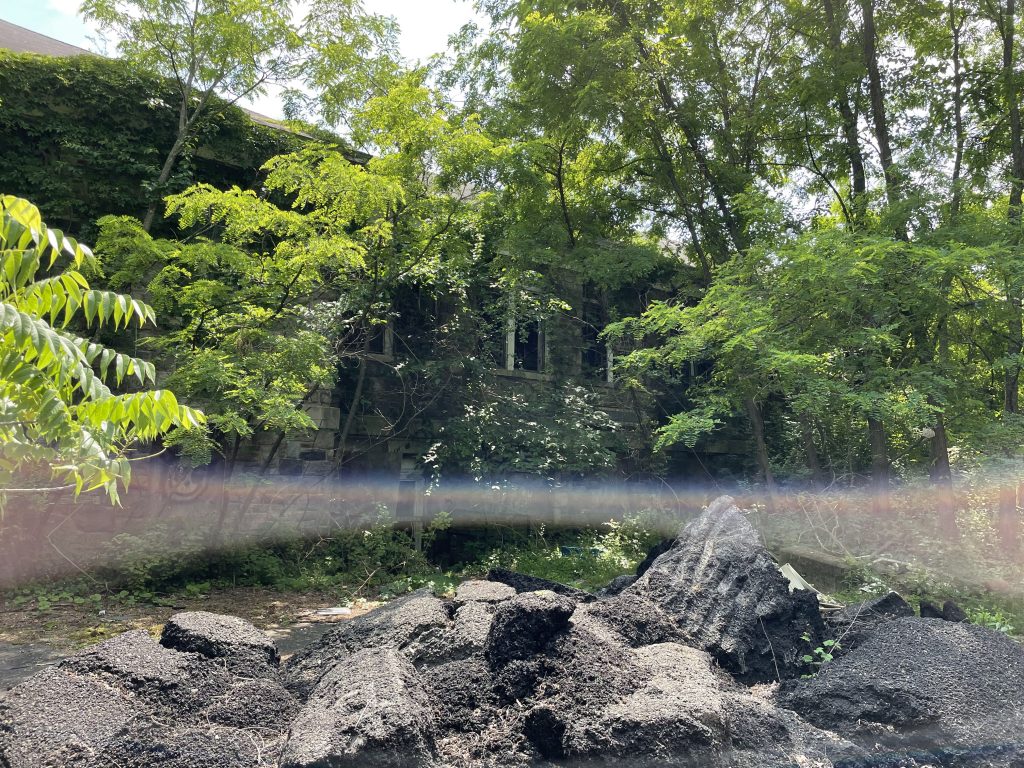
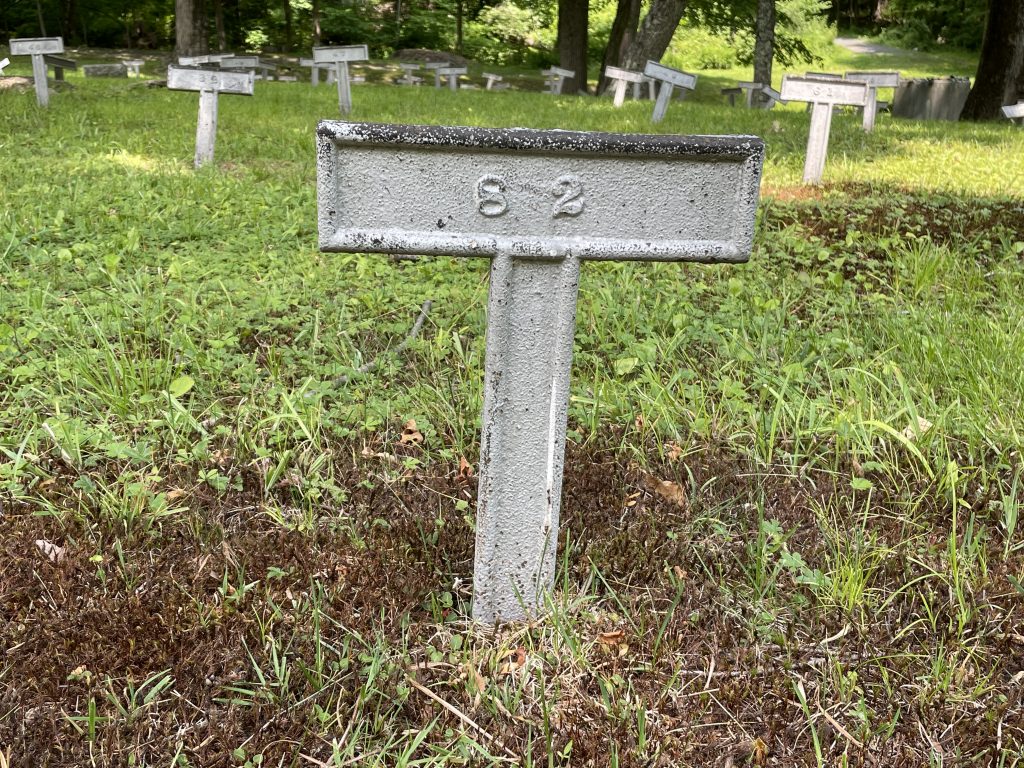
A mile or so up the road you can visit the cemetery that contains the remains of those who died at Letchworth Village but who were not claimed by their families. Sadly, most graves are indicated with a numbered steel marker and no other identifying information. See #82 pictured at right. The cemetery is hidden from view of the road and only accessed via a short walk down a gravel road.
The 900 or so shallow graves here are mostly child-sized. A handful of engraved tombstones mark some graves; we saw graves of children as young as 10 and adults as old as 60 years of age.
In 2007 a memorial plaque (pictured below left) was installed listing the names of those who are believed to be buried at the site.
